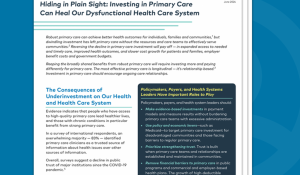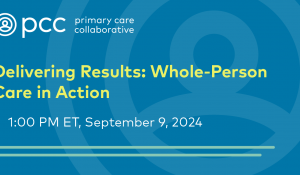You are looking at an archived version of our site. Please visit thepcc.org for a fresh, new experience!
You are here: Array » To Lower The Cost Of H ...
To Lower The Cost Of Health Care, Invest In Social Services
A repeated refrain of politicians is that health care spending in the United States is utterly out of control. We spend almost $9,000 per person per year, amounting to nearly 17 percent of Gross Domestic Product (GDP), far more than any other country, but get a poor return on investment. Life expectancy in the United States ranks 27th of the 34 industrialized nations that are members of the Organisation for Economic Co-operation and Development (OECD). Only three OECD nations have a higher infant mortality rate.
How is it that an abundance of advanced medical care can deliver such disappointing results? The answer lies in the fact that other developed nations do a far better job than the United States of preventing their vulnerable populations from suffering serious illness, by investing substantially more in social services that impact health. OECD nations on average spent about $2 on social services for every dollar of health care spending, compared to only about 55 cents per dollar in the United States, according to a study of 2009 data by Elizabeth Bradley of Yale University and Lauren Taylor of Harvard University. Factoring in these expenditures presents a new perspective: the United States is pushed down to 13th among OECD countries in total health care outlays.
The Basic Necessities Of Life
We need to think in broader terms about investment in health. While extensive batteries of tests and high-tech medical devices help us pinpoint illnesses and cure patients, low-tech social services also should be considered a key factor in our health care equation. The OECD data point to the fact that social services substantially improve population health outcomes while lowering spending on more expensive traditional medical care.
Recent News
August 16, 2024
August 12, 2024
July 16, 2024
May webinar highlights: “The Commercial Market: Alternative Payment Models for Primary Care” Nate Murray explains w… https://t.co/KX9Wi2w6oY —
2 years 5 months ago
@CMSinnovates’ primary care strategy is rooted in a 2021 @theNASEM’s report which called #primarycare “foundational… https://t.co/glbPxvCysg —
2 years 5 months ago
@CMSinnovates has a new #primarycare strategy, envisioning “ACO-based primary care model tests that may focus on pr… https://t.co/aJGF1z411l —
2 years 5 months ago
- Page 1
- ››
Secondary menu
Copyright © 2024 Primary Care Collaborative



